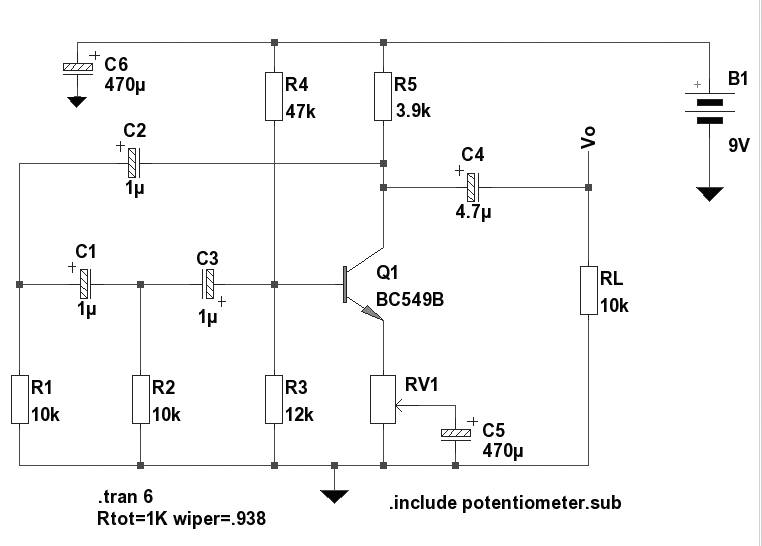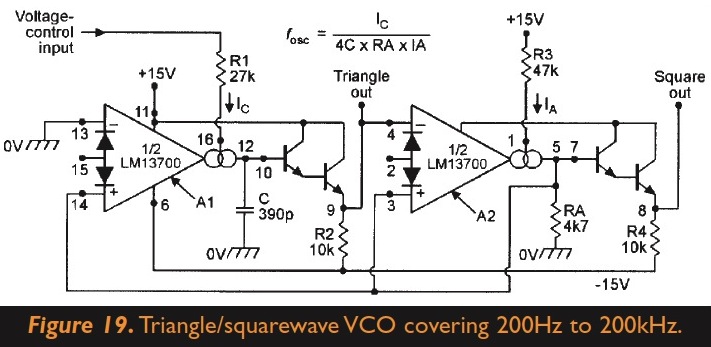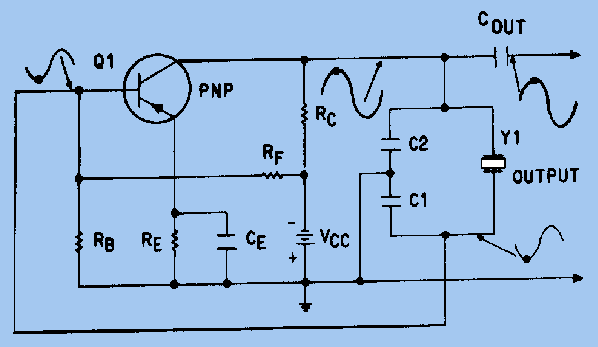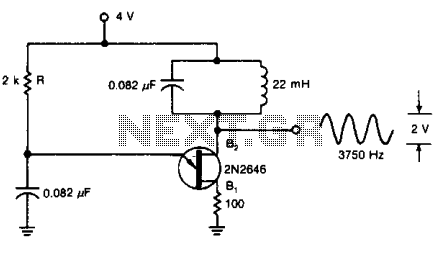
International crystal oscillator
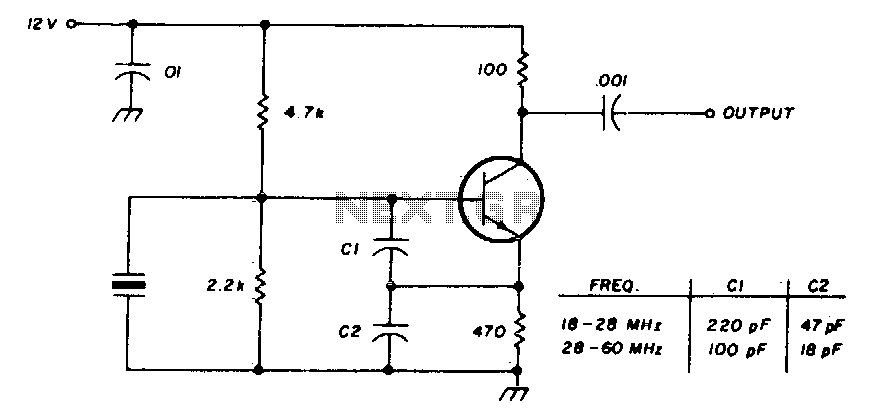
International Crystal OF-1 HI oscillator circuit for third-overtone crystals. The circuit does not require inductors.
The International Crystal OF-1 HI oscillator circuit is specifically designed to operate with third-overtone crystals, which are capable of generating higher frequency oscillations compared to fundamental frequency crystals. This oscillator configuration is particularly advantageous for applications requiring precision frequency generation, such as in communication systems and RF signal processing.
A notable feature of this circuit is its inductor-free design, which simplifies the overall layout and reduces component count. This can lead to improved reliability and lower manufacturing costs. The oscillator typically utilizes a combination of active components, such as transistors or operational amplifiers, along with passive components like resistors and capacitors to create the necessary feedback loop for sustained oscillation.
In operation, the third-overtone crystal is connected in a manner that allows it to resonate at its overtone frequency. The circuit is typically configured to provide the appropriate load and biasing conditions to ensure optimal performance of the crystal. The feedback network is carefully designed to maintain the stability of the oscillation while minimizing phase noise and distortion.
The output of the oscillator can be utilized directly or further processed, depending on the requirements of the application. The absence of inductors not only reduces the size of the circuit but also enhances the frequency response, making it suitable for high-frequency applications. Overall, the International Crystal OF-1 HI oscillator circuit represents a robust solution for generating stable and accurate frequencies in a compact form factor.International Crystal OF-1 HI oscillator circuit for third-overtone crystals The circuit does not require inductors. 🔗 External reference
The International Crystal OF-1 HI oscillator circuit is specifically designed to operate with third-overtone crystals, which are capable of generating higher frequency oscillations compared to fundamental frequency crystals. This oscillator configuration is particularly advantageous for applications requiring precision frequency generation, such as in communication systems and RF signal processing.
A notable feature of this circuit is its inductor-free design, which simplifies the overall layout and reduces component count. This can lead to improved reliability and lower manufacturing costs. The oscillator typically utilizes a combination of active components, such as transistors or operational amplifiers, along with passive components like resistors and capacitors to create the necessary feedback loop for sustained oscillation.
In operation, the third-overtone crystal is connected in a manner that allows it to resonate at its overtone frequency. The circuit is typically configured to provide the appropriate load and biasing conditions to ensure optimal performance of the crystal. The feedback network is carefully designed to maintain the stability of the oscillation while minimizing phase noise and distortion.
The output of the oscillator can be utilized directly or further processed, depending on the requirements of the application. The absence of inductors not only reduces the size of the circuit but also enhances the frequency response, making it suitable for high-frequency applications. Overall, the International Crystal OF-1 HI oscillator circuit represents a robust solution for generating stable and accurate frequencies in a compact form factor.International Crystal OF-1 HI oscillator circuit for third-overtone crystals The circuit does not require inductors. 🔗 External reference
Warning: include(partials/cookie-banner.php): Failed to open stream: Permission denied in /var/www/html/nextgr/view-circuit.php on line 713
Warning: include(): Failed opening 'partials/cookie-banner.php' for inclusion (include_path='.:/usr/share/php') in /var/www/html/nextgr/view-circuit.php on line 713
